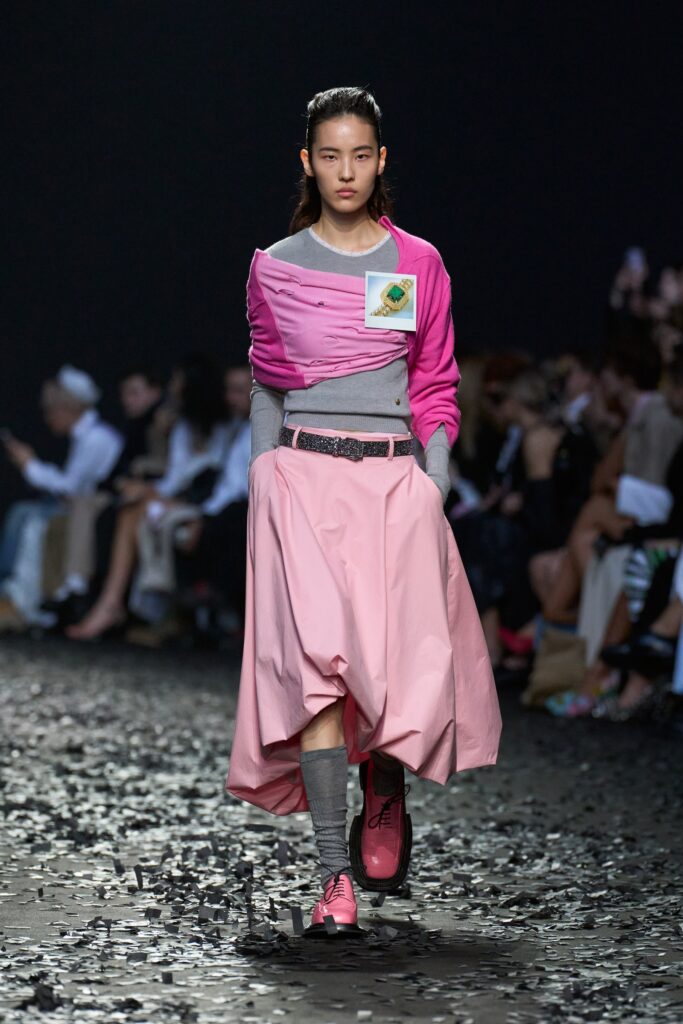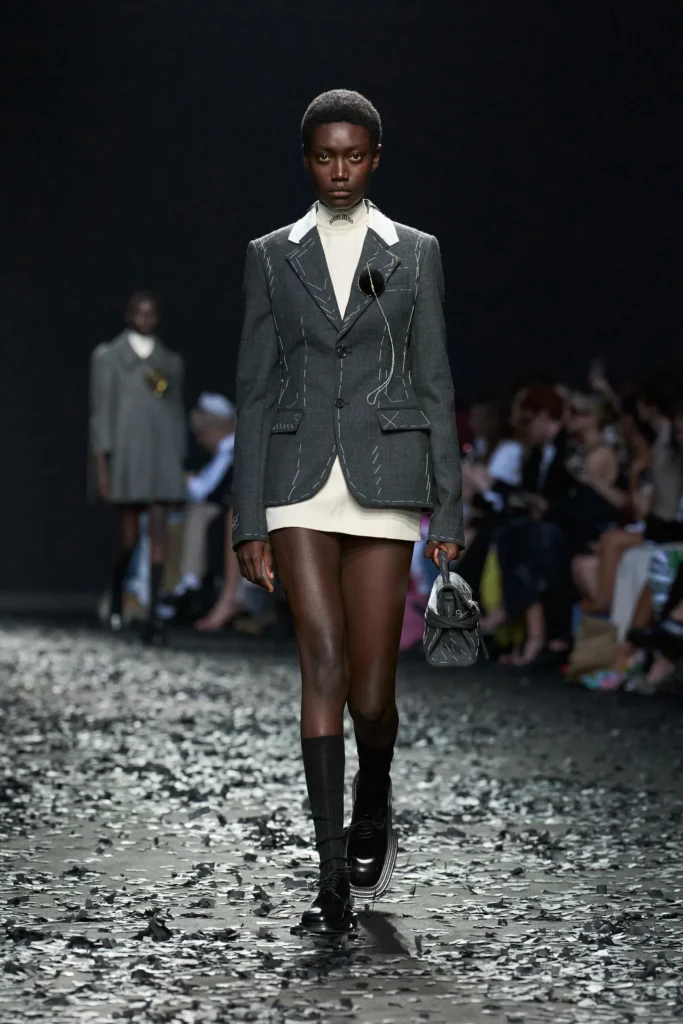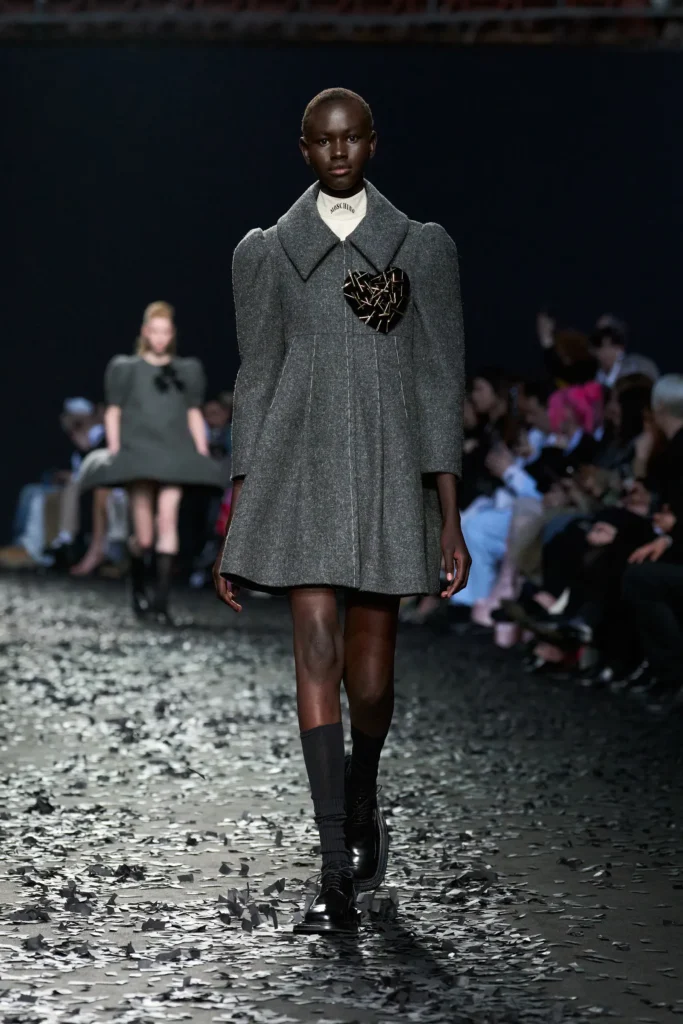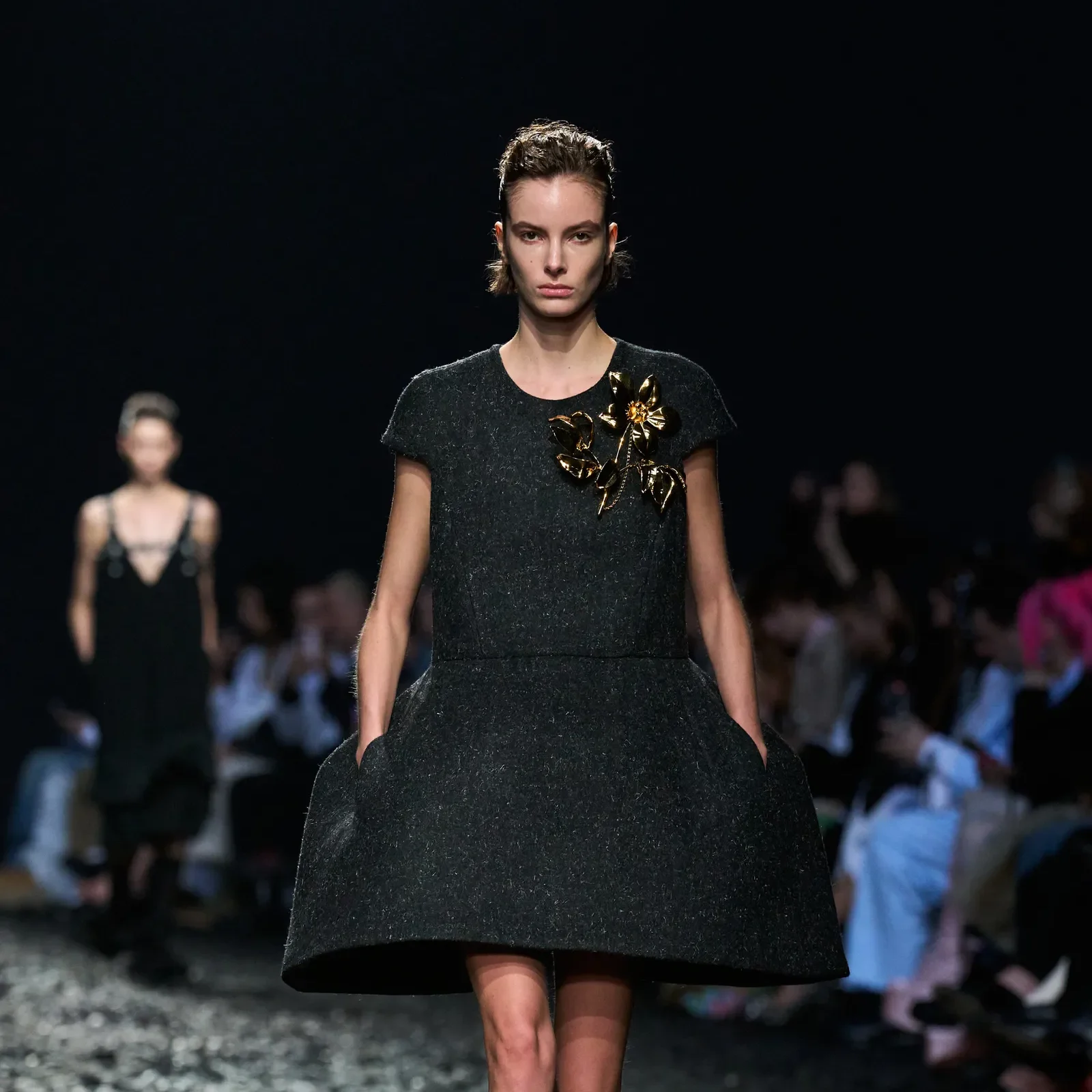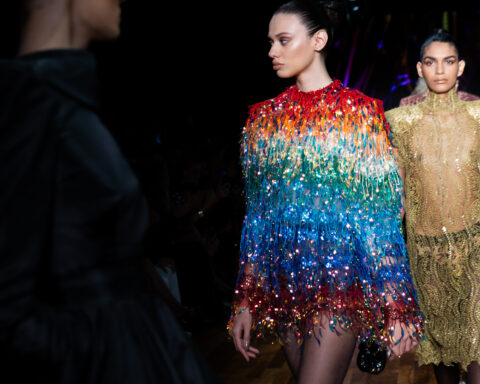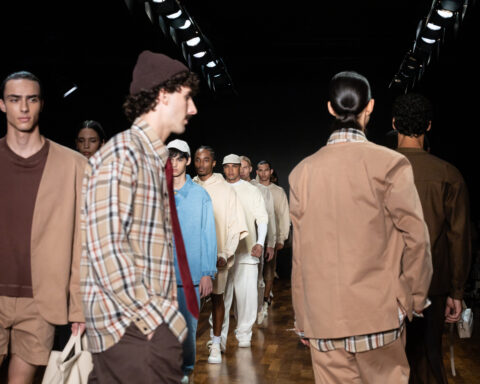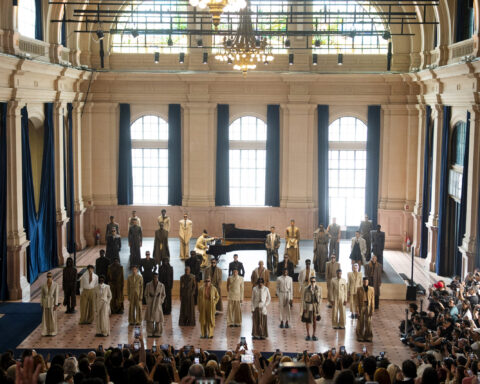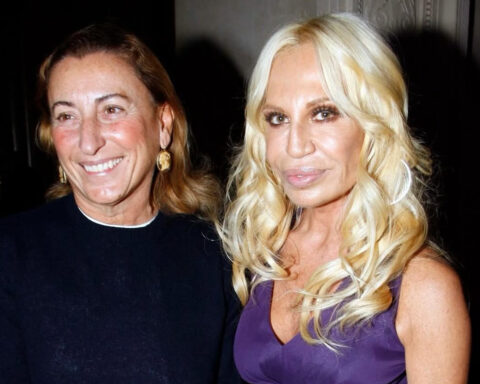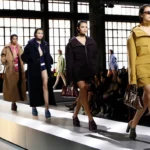Moschino’s latest collection at Milan Fashion Week marked a bold new chapter under creative director Adrian Appiolaza. Balancing the brand’s signature humor with a deeper cultural awareness, Appiolaza reinterpreted Moschino’s rebellious roots for the modern era. The show’s dramatic finale—black confetti cascading over the audience—symbolized both celebration and urgency, setting the tone for a collection that merged wit with meaningful commentary.
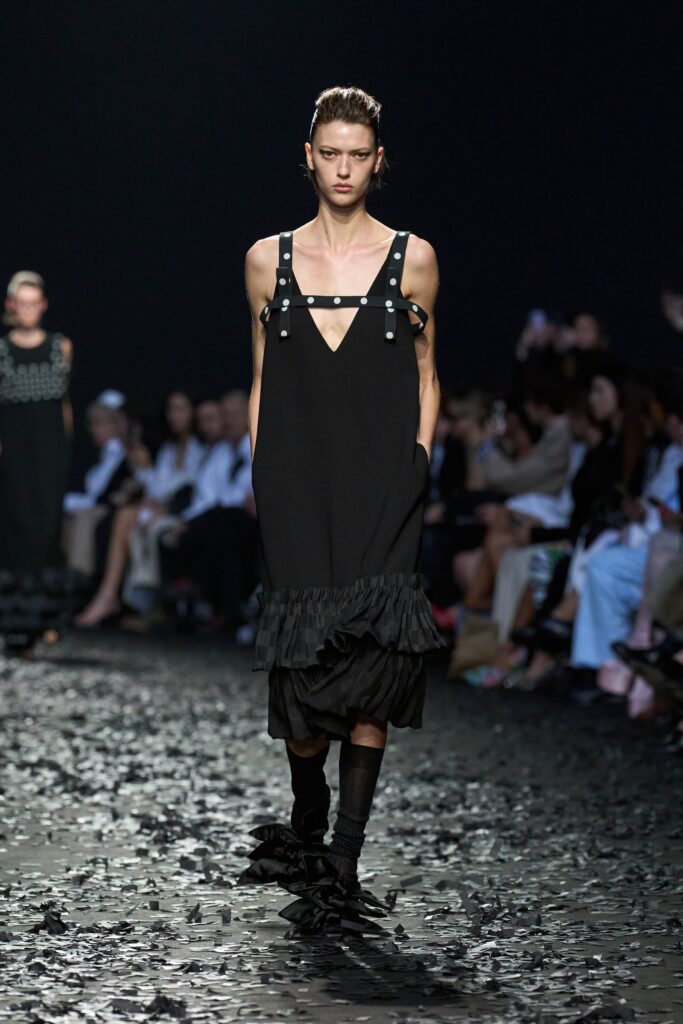

Drawing from Franco Moschino’s iconic designs of the ’80s and ’90s, Appiolaza infused classic motifs with a fresh perspective. Smiley faces, irreverent slogans, and religious satire returned, now layered with a sense of craftsmanship and intentional chaos. Dubbed “All Work and All Play” by some, the collection leaned into deconstruction, with unfinished tailoring, sculptural silhouettes, and mixed-media patchwork redefining the house’s aesthetic.
Moschino’s signature playfulness took center stage with exaggerated proportions and unconventional details. Highlights included:
Unfinished tailoring – Suits with exposed basting stitches and mock sewing needles, capturing the essence of garments still in progress.
Wind-swept couture – Dresses sculpted to appear caught mid-motion, adding a sense of fluidity and movement.
Archive patchwork – A mashup of past Moschino prints and motifs, seamlessly woven into modern silhouettes.
Playful accessories – Handbags shaped like oversized cookie packages, a cheeky nod to everyday objects transformed into luxury.

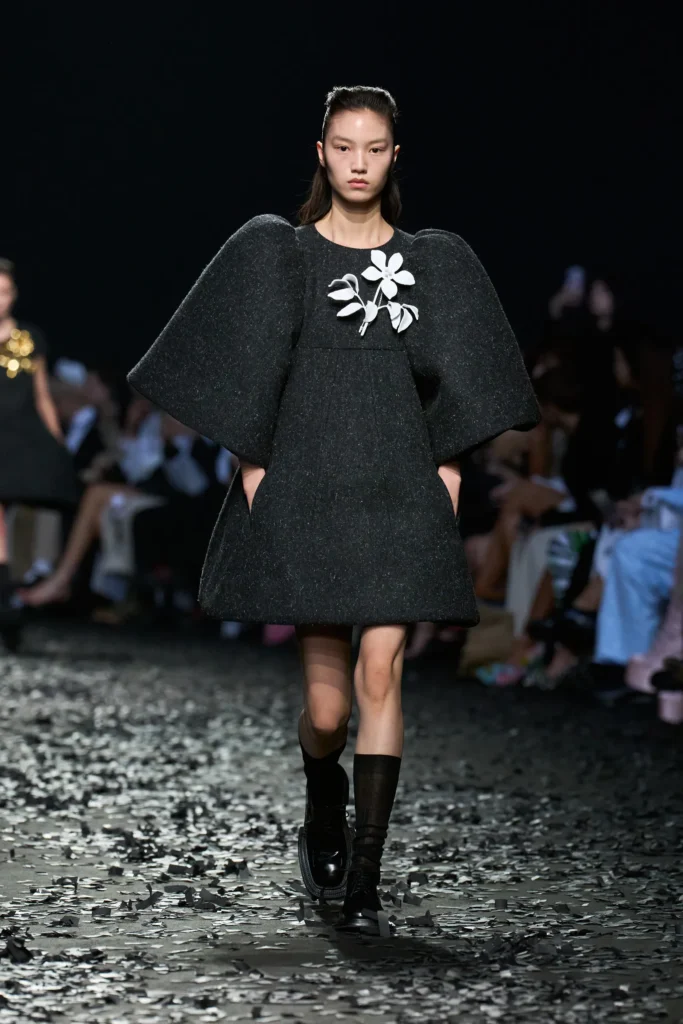
Beyond aesthetics, sustainability and activism played a crucial role in the collection’s narrative. The closing look—a simple oversized T-shirt dress featuring an image of Earth and the words “MOSCHINO SOS”—served as a powerful statement on environmental responsibility. Accessories resembling trash bags further emphasized the brand’s critique of consumerism, echoing Franco Moschino’s past work.
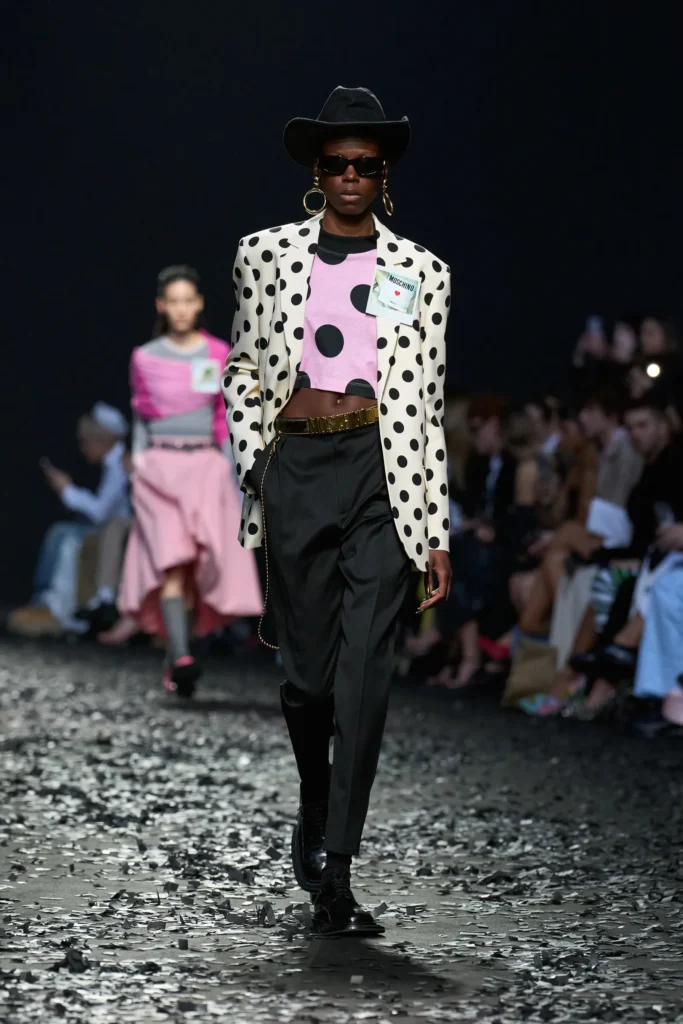

A New Era for Moschino
With this collection, Appiolaza proved that Moschino’s rebellious spirit is alive and well. By blending satire, nostalgia, and social awareness, he positioned the brand as both a source of joy and a catalyst for conversation. In an industry often split between glamour and activism, Moschino showed that fashion can be both—without compromising on either.
